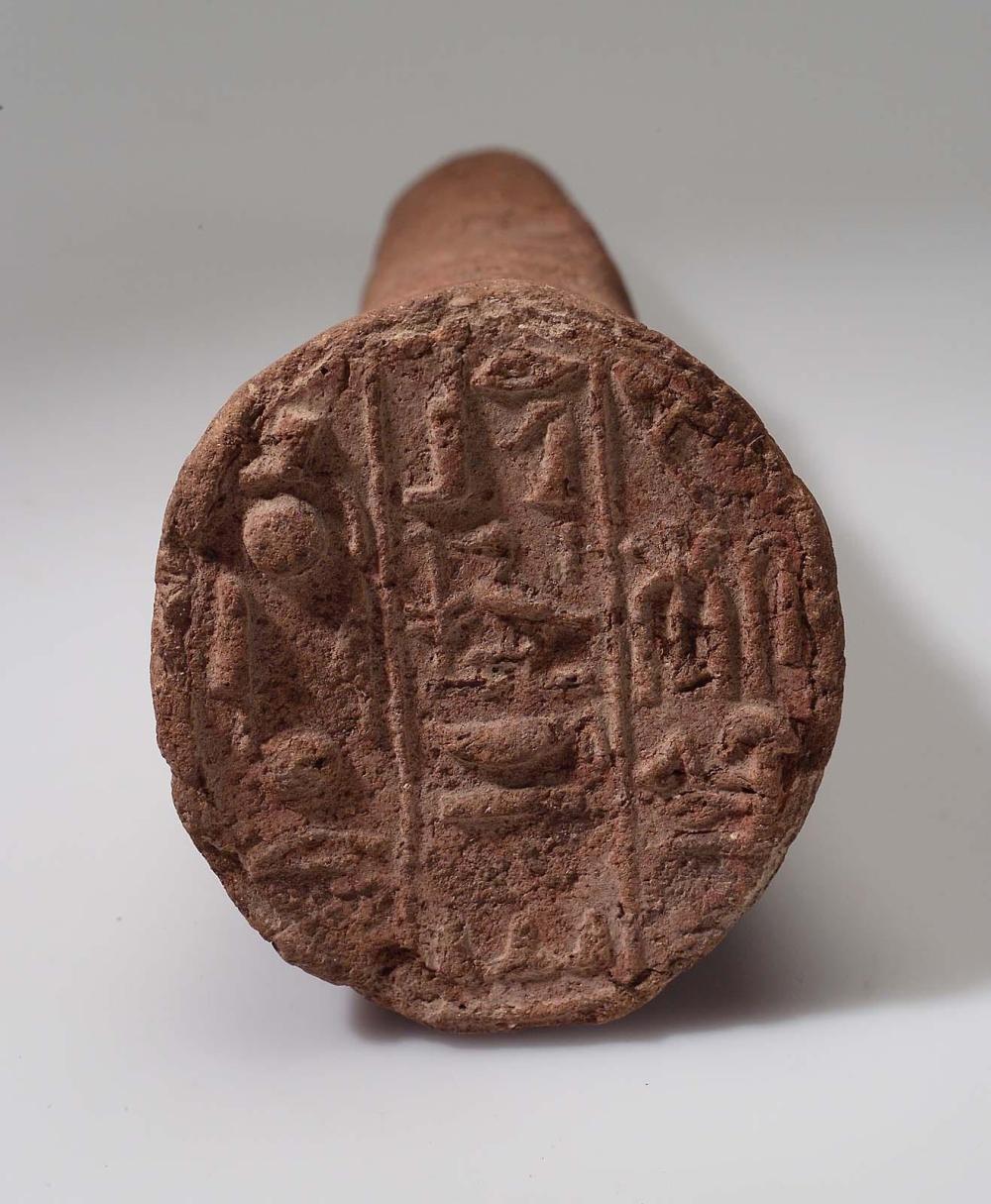Advanced Search 

Funerary cone of Merymose
Egyptian
New Kingdom, Dynasty 18, reign of Amenhotep III
1390–1352 B.C.
Object Place: Egypt, Thebes (Qurnet Murai), Possibly tomb 383
Medium/Technique
Pottery
Dimensions
Length: 16.3 cm (6 7/16 in.)
Credit Line
Hay Collection—Gift of C. Granville Way
Accession Number72.1810
NOT ON VIEW
CollectionsAncient Egypt, Nubia and the Near East
ClassificationsArchitectural elements
Catalogue Raisonné
Davies & MacAdam 170
DescriptionFunerary cone of reddish clay with stamped impression of three divided columns of hieroglyphs identifying the owner as "One honored by / Osiris, Viceroy (i.e. King's Son) of Kush / Merymose" (imAxy xr / Wsir sA-nsw KS / Mry-Ms).
Cones such as this, placed above the entrance to the mud-brick superstructure of the tomb, represented the ends of beams supporting the roof. This cone is stamped with the name and title of Merymose, as well as the name of the pharaoh under whom he served, in three vertical bands of raised hieroglyphs.
Funerary cones were components of a frieze, inserted above the doors of private tombs, particularly in the Theban region. They have been variously interpreted as: name-plates of sorts to identify the tomb owner, decorative memorials, boundary markers for a tomb, dummy bread loaves or meat offerings, symbolic roof beams, or (for the visible circular head) depictions of the sun disk.
Davies and Macadam, A Corpus of Inscribed Egyptian Funerary Cones (1957), type #170.
Cones such as this, placed above the entrance to the mud-brick superstructure of the tomb, represented the ends of beams supporting the roof. This cone is stamped with the name and title of Merymose, as well as the name of the pharaoh under whom he served, in three vertical bands of raised hieroglyphs.
Funerary cones were components of a frieze, inserted above the doors of private tombs, particularly in the Theban region. They have been variously interpreted as: name-plates of sorts to identify the tomb owner, decorative memorials, boundary markers for a tomb, dummy bread loaves or meat offerings, symbolic roof beams, or (for the visible circular head) depictions of the sun disk.
Davies and Macadam, A Corpus of Inscribed Egyptian Funerary Cones (1957), type #170.
ProvenanceProbably from Thebes (Qurnet Murai), possibly tomb 383. By 1836: Robert Hay Collection, Linplum, Scotland; 1863: to his son, Robert James Alexander Hay; 1868-1872: Way Collection, Boston (purchased by Samuel A. Way through London dealers Rollin and Feuardent, 27 Haymarket); 1872: given to the MFA by Samuel's son, C. Granville Way.
(Accession date: June 27, 1872)
(Accession date: June 27, 1872)
